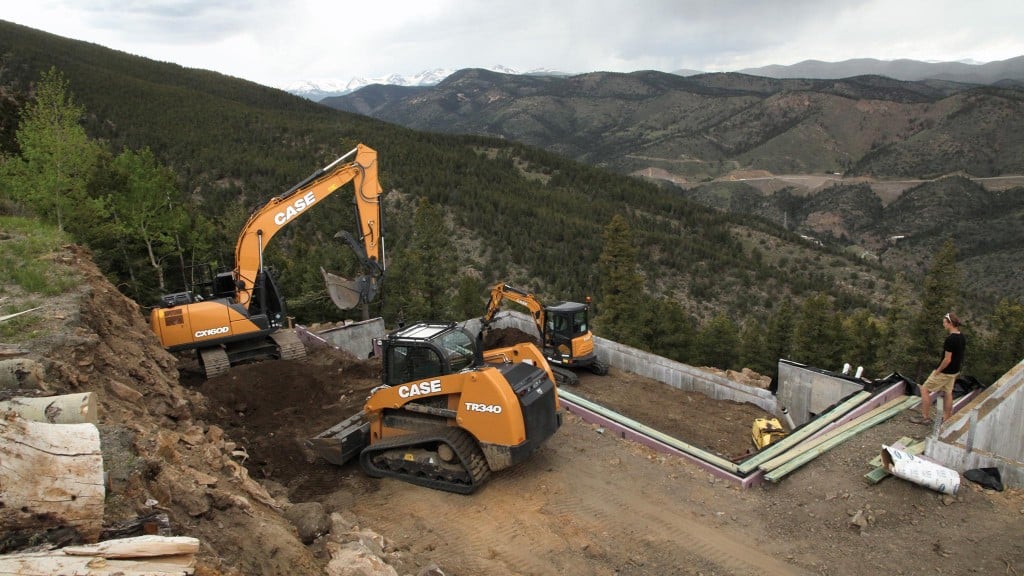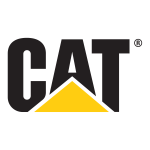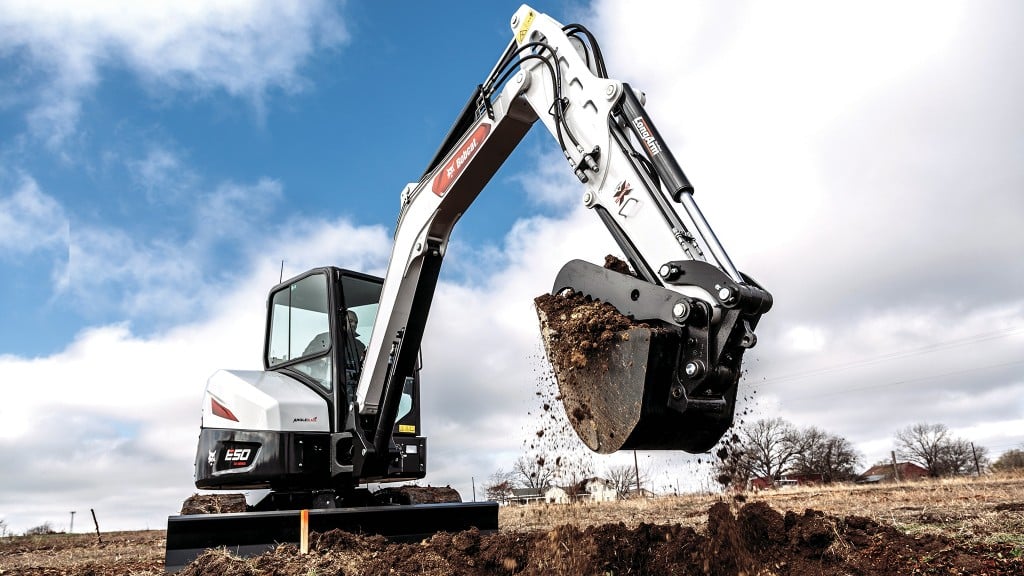Which is better for your needs? Backhoe vs excavator and skid-steer loader

Are two machines better than one, or is one machine better than two? Depending on your application, job site conditions, space constraints, need for speedy work and potential for utilization, the answer varies.
When making a decision about which assets to invest in, there's no one-size-fits-all answer. We asked the experts to weigh in on what to consider for a range of applications and the variables you need to keep in mind when deciding which is the right machine, or combination of equipment, for you.
When to use a backhoe loader and when to use a skid-steer loader and excavator
Construction sites
Several of our experts commented that the type and size of a work site is generally the deciding factor when making an equipment selection for construction work. Larger commercial construction projects are more likely to benefit from the use of backhoe loaders, while a smaller construction site, either in an urban centre or for residential development, tends to be better-suited for mini excavators and skid-steer or compact track loaders which can navigate narrow spaces between buildings. However, Ed Brenton, product manager, Backhoe Loaders and Tractor Loaders, at CASE Construction Equipment, pointed out that residential construction may also benefit from a single machine rather than a pair working in that smaller space.
Chris Trampush, product marketing manager for skid-steer loaders and compact track loaders at JCB, recommended first considering your attachment needs before making a decision on which carrier option will work best for you. Do you need different buckets? Hammers? Breakers? And do you need to dig trenches and lay down pipework? "The great thing about skid steers is that they're versatile when it comes to attachments," he said, adding that the wide variety of specialty attachments available for skid steers and compact track loaders allows them to accomplish a lot of tasks.
Brenton noted that when deciding on machines for construction applications, the starting point should be the types of materials that are going to be moved on the job site. It may not just be dirt – materials such as lumber and pipe need to be taken into consideration. He noted that backhoes have the advantage here because lumber or pipe can be put on top of the bucket, strapped down, then moved. Pallet forks can also be attached to a backhoe for the unloading of trucks.
Visibility is another advantage that Brenton highlighted. The operator is sitting higher up in the cab and has a more expansive view of the workspace than an operator in a skid steer.
Chris Lucas, product marketing manager for compact excavators at JCB, added that if you have to trailer your equipment, you can get a mini excavator on a smaller trailer than a backhoe and those logistics and costs should be considered.
Public works
Higher travel speeds make backhoes a great fit for public works, according to Luke Gribble, solutions marketing manager at John Deere Construction & Forestry. These higher travel speeds enable the machine to road throughout a town between job sites. It can dig, load trucks, and can be used as a yard machine to load salt, sand and rock.
Your variety of needs based on seasonal use is also important to consider. In addition to the roading advantage, Brenton noted that in spring and summer, backhoes are ideal for municipalities to do utility work and dig ditches, and in the winter they can plow snow, pile snow and load salt trucks. For a municipality, trailering one or two machines between job sites also involves having another truck and trailer to schedule and maintain.
Lucas did note that for some public works tasks, such as clearing ditches and under bridges, a backhoe may not have as much reach, or ability to reach around as an excavator.
Utility work
For utility work machine choice is going to depend on the required dig depth and size of the job. According to Aaron Robinson, product consultant for site development at John Deere, mini excavators are popular for residential utilities, fibre optic and trench work, while the backhoe loader is better suited to sewer work. "Sewers usually require a backhoe due to lift and trench depth requirements," he said. "While some contractors find it most efficient to keep the compact excavator ahead of the skid steer, others plan to work so the backhoe will trench, a crew sets or assembles the utilities, then the backhoe comes back around for backfill."
For larger jobs in open areas, mini excavators and skid steers or CTLs can provide an advantage. "You can have two tasks going on at once where the mini excavator is digging the trench and then the skid steer could be following behind, filling it back in. It all depends on what type of utility and how big the pipe is," said Brenton.
Landscaping projects
Ground pressure is the most obvious concern for landscaping projects – and their higher ground pressure leaves backhoes at a disadvantage here. A CTL or mini excavator on rubber tracks is going to provide the least disturbance.
"The skid-steer loader and compact excavator combination is the clear choice for landscaping," said Gribble. "Typically the size of the site does not allow a backhoe, the work doesn't require a backhoe, and the compact equipment causes less ground disturbance for homeowners and commercial customers."
The attachment versatility of a skid-steer or compact track loader also makes them the ideal choice for landscaping applications, while a compact excavator with a thumb can place rocks and build walls or water features. Specialty attachments enable skid steers to handle stump and tree removal, site cleanup, loading and unloading of pallets of sod or block, achieving final grade, or power raking, Gribble added.
Trampush added that the excavator is ideal for digging work in landscaping projects, such as excavation for a pool.
Snow removal needs should also be considered – both skid-steer loaders and backhoe loaders can be outfitted with attachments to clear snow, but the backhoe loader does have the size advantage of a higher cab for greater visibility, recommended Brenton.
Maintenance, cost and utilization considerations for a backhoe vs excavator and skid-steer loader
There are several cost and maintenance factors to consider, such as the cost of replacement tracks versus tires, the time spent performing maintenance on one machine versus two, and the time spent doing daily walk-arounds of your equipment – all of these considerations will have to be balanced with utilization.
"One of the pros to having both a skid steer and mini excavator in your fleet is the ability to get more work done faster," said Gribble. But something else he recommends factoring in is the experience of your operators. "We often hear that operating a skid steer or mini excavator is much easier for new or inexperienced operators compared to operating a backhoe. However, if you have an experienced backhoe operator, they may be able to adequately perform the job duties required in a sufficient time."
If you decide to go with an SSL or CTL and excavator, Gord McDougall, industry manager, Building & Construction Products at Finning Canada, recommends investing in newer, more efficient equipment that provides more attachment and work tool capabilities, less fuel consumption, lower maintenance costs, reduced downtime and improved profitability in the long run.
"I think the biggest [maintenance and cost consideration] for minis and compact track loaders is the track option," said Trampush. "First for skid steers and compact track loaders, most people prefer tracks because they can go anywhere. It doesn't matter the conditions, they can go through mud, water, whatever. You're kind of limited on wheels. Though tracks are great, the maintenance is also a little bit more time-consuming."
He added that cleaning out of tracks every night is important to prevent material freezing, for example, but they do also last longer than tires. You need to consider the price of the tracks versus the tires (which do cost less), and how often they'll need to be replaced in your given application.
Utilizing two machines also doubles the time that needs to be spent on walkarounds each day and on labour for that equipment. The expense of oil changes will also be double – Brenton noted that engine sizes between backhoes and skid steers are going to be similar and will have the same needs.
Lucas from JCB brought up walkarounds as well, but considered the time spent on extra maintenance to be minimal when compared to the potential efficiency gains from using both an excavator and skid-steer or compact track loader.
"Another way to avoid high maintenance costs is to rent equipment," suggested McDougall. "This also means you don't have to worry about equipment being underutilized. When you know business is increasing and you're going to need consistent use of a piece of equipment, that's when you should consider purchasing new."
According to McDougall, from an initial investment perspective, the combination of mini excavator and skid steer or compact track loader is not much more than a backhoe loader. However, Brenton noted that, depending on the technology built into the machines you select, the price of purchasing a mini excavator plus a skid-steer loader could add up to substantially more than a backhoe, which hasn't always been the case.
Gribble also weighed in on cost, and suggested that even if purchasing two machines up front is more expensive compared to the cost of a backhoe loader, you can often bring in additional revenue when you have them each working on the same job, or on separate jobs.
"You should scale your fleet to maximize profitability," recommended McDougall. Take inventory of your current assets by looking at its condition and think about how their efficiency and versatility impacts the productivity of your operators.
Company info
16901 - 109 Avenue
Edmonton, AB
CA, T5P 4P6
Website:
finning.com
Phone number:
888-346-6464







